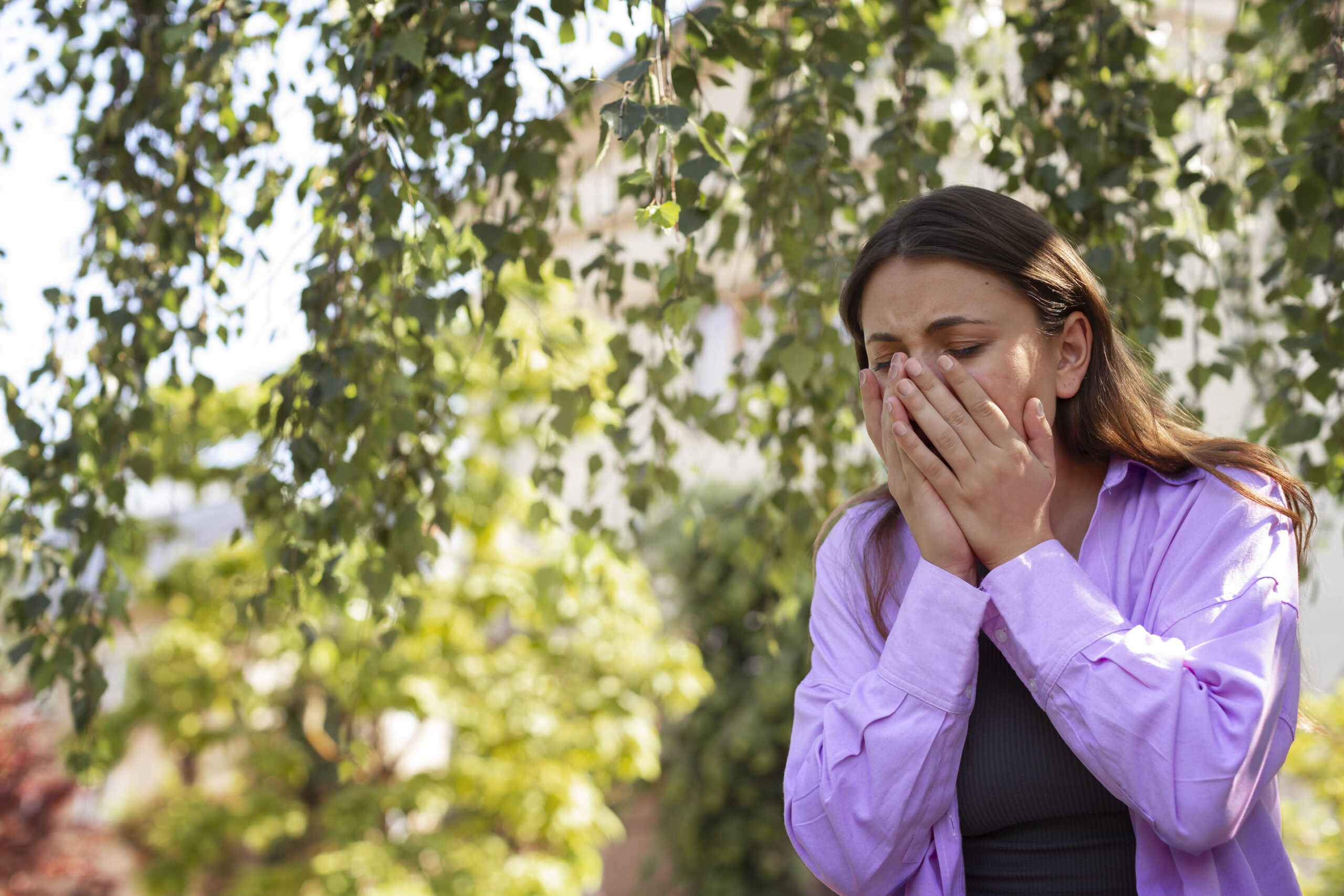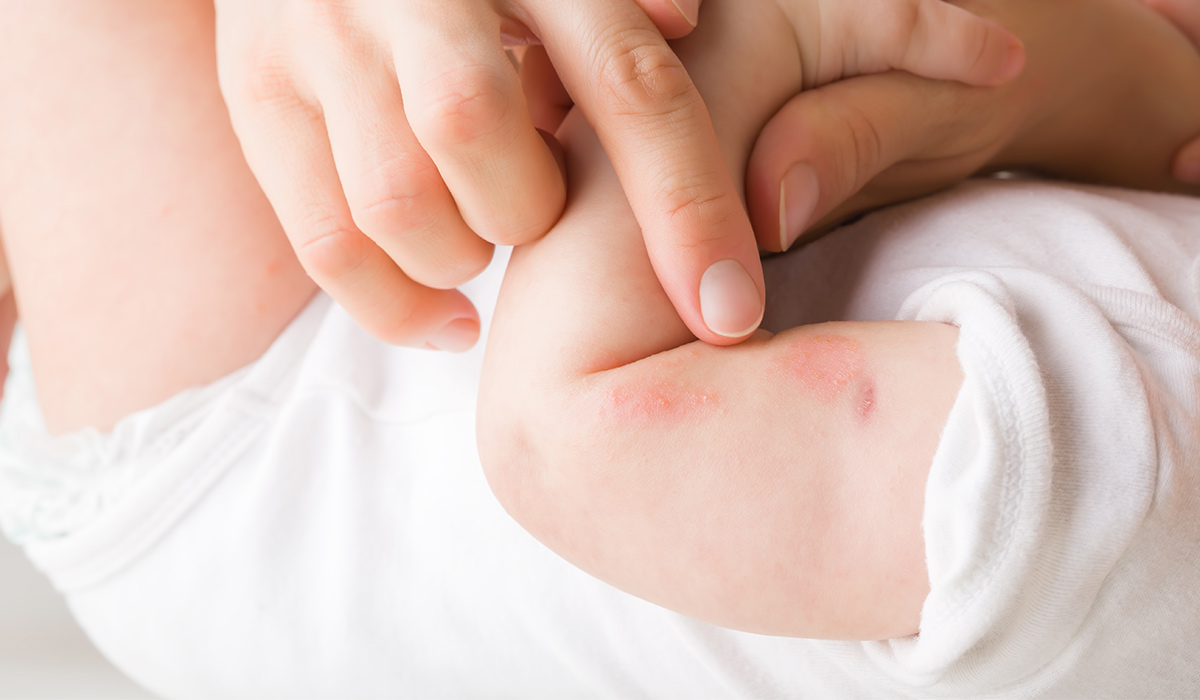The role of an allergist is to help patients suffering from allergies. They identify the allergen causing the reaction and provide the most effective treatment. Before diagnosing and recommending treatment, the allergist will interview the patient. This interview will cover symptoms, frequency, family history of allergies, other medical conditions, and medications taken.
Allergy tests are a crucial step in identifying the allergenic substance. These tests may include skin tests, blood tests, or provocation tests. Skin tests involve applying specific allergens to the skin to observe allergic reactions. Blood tests check for IgE antibodies to specific allergens. Provocation tests provoke the body's response to allergens by administering them intranasally or intrabronchially.
Allergology![]() is the branch of medicine that deals with illnesses caused by allergens (substances that can sensitize the body). This field was developed to identify and treat diseases resulting from antigens in the environment. An allergist
is the branch of medicine that deals with illnesses caused by allergens (substances that can sensitize the body). This field was developed to identify and treat diseases resulting from antigens in the environment. An allergist![]() is a doctor who focuses on finding and treating allergens.
is a doctor who focuses on finding and treating allergens.
In a healthy person, contact with allergens does not cause allergic reactions. However, in allergy sufferers, contact with a specific sensitizing agent will cause an allergic symptom. The most common symptoms indicating that a person has an allergy include a watery runny nose, sneezing, persistent, choking cough, itchy skin, and burning and redness of the conjunctiva.
Allergy![]() consists of an excessive, incorrect reaction of the immune system to substances present in the environment that are foreign to the body, referred to as allergens, which under normal circumstances should be ignored. In healthy people, these substances do not cause any discomfort, but in allergic people, they cause several unpleasant and sometimes even health-threatening reactions.
consists of an excessive, incorrect reaction of the immune system to substances present in the environment that are foreign to the body, referred to as allergens, which under normal circumstances should be ignored. In healthy people, these substances do not cause any discomfort, but in allergic people, they cause several unpleasant and sometimes even health-threatening reactions.
Allergic reactions involve the immune system, which consists of, among others, cells: eosinophils, mast cells, and lymphocytes, as well as antibodies, including immunoglobulins of class E (IgE).
Allergy is an acquired reaction. It appears only after contact with the causative agent, i.e., the allergen, and only when the immune system cells have learned to recognize it. Subsequent contact with the allergen triggers a violent reaction, which results in the release of histamine, a substance responsible for many allergy-related symptoms. In some cases, allergy develops after repeated contact with the allergen, in others it develops after years of repeated exposure to a specific factor.

The mechanisms responsible for the allergic reaction in the nasal and bronchial mucosa caused by inhaled substances are very similar. For an allergic reaction![]() to occur, the body must first come into contact with the allergen. Since many inhalant allergens are common in the environment, the first contact with them occurs early in life.
to occur, the body must first come into contact with the allergen. Since many inhalant allergens are common in the environment, the first contact with them occurs early in life.
Some people's immune systems have not “learned” to tolerate these substances. Antibodies directed against the antigens to which the patient is allergic are constantly present in the patient's blood and can be detected by the so-called specific IgE. Total IgE levels are also increased in some people.
IgE antibodies circulating in the blood bind to receptors on the surface of immune system cells. The most significant factor for an allergic reaction is the binding of IgE on the surface of mast cells. The allergen that enters the body combines with the antibodies on their surface. It results in the release of various substances from mast cells, causing local inflammation (increased vascular permeability, tissue swelling, and influx of inflammatory cells).
The most essential substances released by mast cells during an allergic reaction include histamine and leukotrienes. These substances are also responsible for the contraction of bronchial smooth muscles, which causes an attack of shortness of breath after contact with an allergen in asthma patients.
Antihistamines, often used to treat allergies, block the action of histamine. They are mainly used to treat allergic rhinitis because their effect on the allergic reaction in the bronchi is not effective enough. In contrast, anti-leukotriene drugs (inhibiting the action of leukotrienes) are most often used in asthma patients.
There are several groups of allergens![]() :
:
Based on the results of the tests and the knowledge acquired during the interview with the patient, this doctor diagnoses the allergen they are dealing with in a given case. They provide the most appropriate treatment for a specific patient in further proceedings.
You can get to this specialist through a referral from a family doctor or a doctor specializing in another medical field. However, when among the symptoms that bother a given person, there are signs such as:
It is worth knowing that an allergist for adults will not always be the best choice for a little patient. In the case of children, a pediatric allergist![]() is a better choice, i.e., a specialist doctor who also knows the field of pediatrics.
is a better choice, i.e., a specialist doctor who also knows the field of pediatrics.

During the first visit, the doctor conducts a detailed medical interview to better understand the patient's health situation, particularly the symptoms of allergies. Then, they verify the medical documentation and test results, if any, collected and delivered for the visit. In addition, they examine the patient appropriately for the symptoms of allergies.
In patients whose allergies cause skin lesions, the allergist carefully assesses the changes, checking the condition of the skin and the nature of the changes. If respiratory problems, such as shortness of breath, occur, the doctor listens to the patient, paying attention to any wheezing, which is characteristic of asthmatic symptoms.
The doctor's task is to obtain the most extensive knowledge possible, allowing them to direct further diagnostic and therapeutic procedures.
Allergist for consultation will:
The first and basic stage of diagnosing allergic diseases is a detailed medical interview, which makes it possible to determine the circumstances of the appearance of symptoms, the occurrence of allergic diseases in the family, and allergic symptoms observed in the past.
The next stage is to perform additional tests. Depending on the nature of the symptoms, the doctor may order skin tests, provocative tests, spirometry, and determination of the concentration of specific IgE antibodies in the blood.
The basic diagnostic tests for detecting allergies are skin tests![]() , divided into prick and intradermal tests. Intradermal tests involve intradermal injection of a solution with a standardized allergen. In the case of a prick test, such a solution is applied to the skin and pricked with a special needle or knife.
, divided into prick and intradermal tests. Intradermal tests involve intradermal injection of a solution with a standardized allergen. In the case of a prick test, such a solution is applied to the skin and pricked with a special needle or knife.
Skin tests are most often performed on the skin of the forearms or back; the result is read after 15 minutes. It is positive when a wheel with a red halo larger than 3 mm in diameter appears. The severity of the reaction is determined by how large the wheel is and whether it has branches or not.
Performing prick tests is recommended for allergy symptoms to substances present in the air (e.g., plant pollen, animal hair) or to the venom of Hymenoptera (wasp, bee). In contrast, intradermal tests are used to diagnose drug allergies. Food allergy causes a weak skin reaction, which is why food skin test responses are often unreliable.
Another type of skin testing is patch testing used to diagnose contact allergy, i.e., skin lesions (rash) that appear after specific substances come into contact with the skin. The antigen responsible for the development of contact allergy does not cause systemic symptoms, e.g., in the respiratory tract or gastrointestinal tract, as observed in the case of classic immediate allergic reactions, but only at the site of contact of the antigen with the skin.
Sometimes foci are observed distant from the site of contact with the antigen, but the allergic reaction is always local and limited. Most compounds that cause contact allergies are low molecular weight substances that stimulate the immune system when combined with proteins in the skin. Contact allergies are most often caused by nickel, chrome, rubber, some ointments, ingredients of perfumes, deodorants, and soaps.

Determination of the concentration of specific immunoglobulin E![]() in blood serum (IgE) is performed as an alternative to skin tests in some people. Specific IgE antibodies arise due to contact with an allergen, i.e., a substance to which the immune system has reacted hypersensitively. Therefore, it has produced a supply of special IgE antibodies that recognize the allergen and are ready to destroy it.
in blood serum (IgE) is performed as an alternative to skin tests in some people. Specific IgE antibodies arise due to contact with an allergen, i.e., a substance to which the immune system has reacted hypersensitively. Therefore, it has produced a supply of special IgE antibodies that recognize the allergen and are ready to destroy it.
From that moment on, if there is contact with an allergen, antibodies immediately recognize it and inform cells specialized in mobilizing the immune system to fight the apparent enemy. Most often, specific IgE is directed against allergens of house dust mites, tree pollen, grasses, cereals, weeds, animal dander, molds, hymenoptera venoms, and food allergens.
This test is significant in the diagnosis of allergies in children and patients for whom skin testing is difficult or impossible. It happens, for example, when patients are constantly taking medications for other diseases, which prevents the correct interpretation of skin and provocative tests because these drugs weaken the immune system's response and cannot be discontinued while the tests are being performed.
In patients with suspected allergies, the percentage/number of eosinophils in peripheral blood is often assessed. Allergies are characterized by a moderate increase in the number of eosinophils. Other causes of eosinophilia include parasitic and cancer diseases.
A test that helps diagnose ailments that may be related to allergies is a spirometry test![]() . Spirometry does not directly detect allergies but is used to detect lung ventilation disorders, which are characteristic, for example, of atopic asthma. A spirometry test involves measuring specific volumes and air flow rates in the respiratory tract.
. Spirometry does not directly detect allergies but is used to detect lung ventilation disorders, which are characteristic, for example, of atopic asthma. A spirometry test involves measuring specific volumes and air flow rates in the respiratory tract.
Provocation (exposure) tests![]() are also used in allergological diagnosis. They involve administering a potential allergen to cause disease symptoms in a given organ. For example, you can administer an allergen extract solution in the form of drops on the nasal mucosa or inhale it into the bronchi.
are also used in allergological diagnosis. They involve administering a potential allergen to cause disease symptoms in a given organ. For example, you can administer an allergen extract solution in the form of drops on the nasal mucosa or inhale it into the bronchi.
There are many prescription and over-the-counter medications![]() used by allergists to relieve allergy and asthma symptoms. Belong to them:
used by allergists to relieve allergy and asthma symptoms. Belong to them:
Immunotherapy![]() is a treatment that helps the body become less sensitive to specific allergens. It involves gradually exposing the person to increasing doses of the allergen, which can desensitize them to its harmful effects.
is a treatment that helps the body become less sensitive to specific allergens. It involves gradually exposing the person to increasing doses of the allergen, which can desensitize them to its harmful effects.
Immunotherapy can be administered as a series of allergy shots or drops placed under the tongue (sublingual immunotherapy). Sublingual immunotherapy is available for ragweed, grass pollen, and mites. These tablets are taken daily at home, but the first dose is administered at the allergist's office. Over time, immunotherapy can make allergies disappear.
Unlike allergy medications that alleviate symptoms, immunotherapy aims to lessen the body's immune response so that medications are no longer necessary.
Table of Contents

Food allergy is a common condition. Nowadays, the number of cases is increasing. The symptoms are many and varied. Find… read more »

Allergies happen when the immune system starts a reaction against certain substances, such as pollens, pet fur, food, or medication.… read more »

Hay fever is one of the symptoms of allergies. It may appear immediately after contact with the allergen or after… read more »

Angioedema is a medical condition characterized by rapid and localized swelling in the deeper layers of the skin and inner… read more »

Anaphylaxis is a strong reaction that happens when your body faces allergens it strongly dislikes, like peanuts or insect bites.… read more »

Pink eye is one of the most frequently diagnosed ophthalmological diseases. It may be bacterial, allergic or viral. What are… read more »

When a bee sting happens, it implies the bee is working hard to push the stinger into someone's skin and… read more »

Urticaria is a disease in which raised pale blisters surrounded by redness form on the skin under the influence of… read more »

Eczema flare-ups are usually related to specific triggers. Learning how to avoid specific to your eczema triggers, can be a… read more »